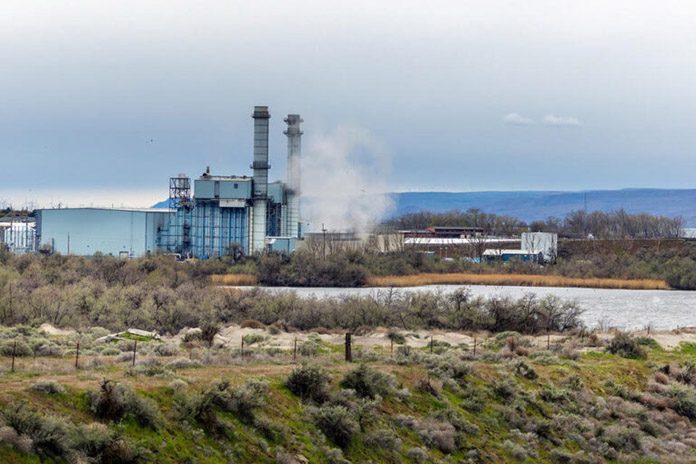
By Alex Baumhardt/Oregon Capital Chronicle
The Port of Morrow continued this winter to spread more nitrogen-contaminated wastewater across eastern Oregon farm fields than permitted, further harming an already contaminated aquifer supplying drinking water to thousands of residents in Morrow and Umatilla counties.
Officials at the state’s second largest port, which sits along the Columbia River in Boardman, knew this would happen. So did regulators at the Oregon Department of Environmental Quality who slapped the port with a $727,000 fine on Thursday for more than 880 permit violations over 80 days from November 2023 through February 2024.
“DEQ is continuing to hold the port accountable by issuing penalties when violations occur. It often takes time for facilities to construct necessary pollution control systems to bring them into compliance,” Antony Vorobyov, a spokesperson for the department, said in an email. Vorobyov added that the bulk of excess wastewater was applied to fields deemed at low risk for leaching nitrogen and nitrate into the aquifer.
The latest violations follow years of pollution by the port, which has contributed to the contamination of well water that several thousand local residents rely on, including many low-income, Latino families. The environmental department essentially ignored the situation for years until issuing its first fine of $1.3 million in January 2022. That was bumped up to more than $2 million by June. An investigation by the Capital Chronicle found the port had not just violated its permit for three years, but for most of the past 15 years. The port is among the largest wastewater permit holders regulated by the state, as measured by the volume of water it processes, according to Vorobyov.
Leaders from Oregon’s environmental quality department along with the Oregon Department of Agriculture, Oregon Water Resources Department and the Oregon Health Authority will host a Q&A about the ongoing nitrate contamination issues in Morrow and Umatilla counties on Thurs., April 18 from 6 to 8 p.m. at Riverside High School in Boardman.
Pay-to-pollute
Advocates for safe drinking water in northeast Oregon are frustrated by what amounts to a pay-to-pollute agreement between the port and the state.
“We keep hearing that the Department of Environmental Quality is levying fines for violations, and that those violations and fines will deter future violations. But if that were the case, it seems like we would have seen a reduction by now,” said Kaleb Lay, an organizer with the nonprofit environmental and social justice group Oregon Rural Action. “Instead, the violations per day during this non-growing season went up every month.”
Following the 2022 fines, the port agreed to invest $200 million in a digester system to reduce nitrogen levels in its wastewater, but port officials said the system won’t be fully operational until late 2025. Until then, the port and the environmental quality department expect violations to continue during the winter non-growing season.
“The Port of Morrow is investing $500 million to upgrade its wastewater treatment system to meet DEQ regulatory requirements,” wrote the Port’s director, Lisa Mittelsdorf, in an emailed statement. “When upgrades are in place, the Port will have storage capacity to avoid winter-season land application.”
She added that the port will direct 80% of its latest fine from the environmental quality department to a safe drinking water program for area residents.
That amounts to about $582,000. The port has an economic output of more than $2.5 billion per year.
Reusing, but not reducing
The port’s nitrogen-rich wastewater is collected year-round from the food processing plants at its Boardman campus, where nitrogen from fertilizers and crops gets into water processing water. The port spreads the wastewater around area farm fields, as a form of recycling both the water and the compounds in the fertilizer, but too much of the water spread across fallow fields or those without crops deep enough in the soil to absorb the nitrogen becomes a problem.
Nitrogen binds with water to become nitrate, and it seeps into the groundwater aquifer that supplies water to wells in the area. Nitrate is harmful to consume at high levels over long periods. The port is one of many contributors to the groundwater contamination in the area, which include fertilizer from area farms, from other area food processors and from manure from confined animal operations.
Officials at the state’s environmental quality department and port have identified a number of methods to try to minimize the pollution during the next two years while the digester system is being built. Environmental regulators expanded the farm acreage where the port is allowed to dump wastewater, and the port has agreed to cut back on 57 million gallons of wastewater generated during the winter months by capping the water used by some companies doing business at the port.
The cutbacks are not likely to be enough to bring the port into compliance with its permit, however. The port handles up to 3.5 billion gallons of wastewater each year, up 1 billion gallons in just the last decade.
This story first appeared in the Oregon Capital Chronicle.










